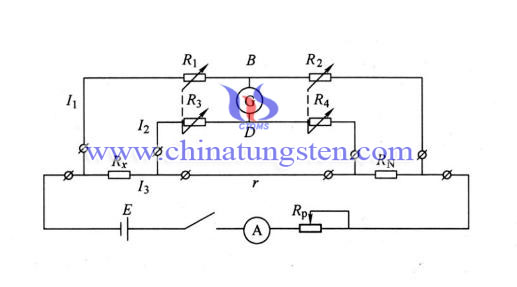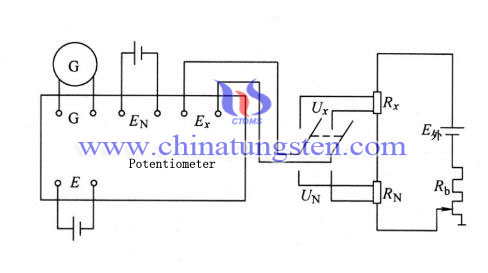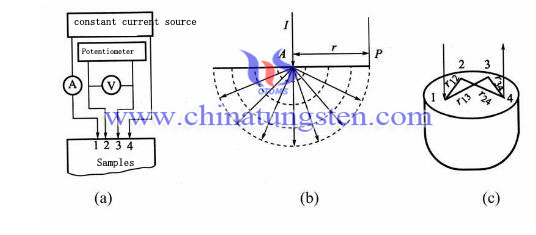Tungsten Copper Thermal Conductivity Test
Tungsten copper thermal conductivity tests actually measure the resistance of the sample, because according to the geometry and the resistance value of the sample can be calculated its resistivity. Many resistance measurement method should be selected according to the different methods the size of the sample resistance, accuracy requirements and specific conditions. If less precision, commonly megger, multimeter, digital ohmmeter and voltammetry measurements, and for relatively high precision or resistance material between 10-6 ~ 102Ω (eg resistance of metals and alloys value) measurements must be used more sophisticated methods of measurement. These include the following methods:
1, Double Bridge Method
DC Bridge is a device used to measure the resistance of the comparative instrument, which is based on the known quantity is measured on the bridge circuit compares the measurement results obtained. Since the bridge has a high measurement accuracy and sensitivity, and great flexibility, are widely used. Wheatstone bridge circuit due to lead resistance and contact resistance can not be eliminated, under normal circumstances, these additional resistors of about 10-5 ~ 10-2Ω, large errors in measuring small resistor. So Wheatstone bridge is only suitable for measuring the resistance of 102 ~ 106Ω.
Measuring principle double bridge method as shown below:

2, Dc Potentiometer Measurements
DC potentiometer is a measure of electromotive force or potential difference of an instrument made in accordance with the principle of compensation. High precision measurement, the instrument is still one of the most accurate measurement of the potential difference, precision potentiometers tiny measure of potential 10-7V. It can not only fine measuring the electromotive force and potential difference in the circuit, with appropriate precision measurement circuit can also current, resistance, electric power and so on.
DC potentiometer measuring method as shown below:

3, Dc Four-Probe Method
The resistivity of the semiconductor material is usually a DC four-probe method, also known as four-electrode measurements. Equipment and wiring used with the sample shown below. Seen from this figure, when the test four metal probe and the sample surface contact, the outer two 1, 4-current probe for, two inner voltage probes 2 and 3 is measured. When measuring the four probes can not be arranged in a straight line equidistant from the current source input current of the internal sample small pressure drop, while the high-impedance electrometer, electronic or millivolt value voltmeter measured 2,3 two between voltage U23 of probes (in V).

Any feedback or inquiry of Tungsten Copper Alloy Products please feel free to contact us:
Email: sales@chinatungsten.com
Tel.: +86 592 512 9696 ; +86 592 512 9595
